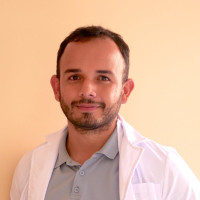Mental Health & Neurology
Medical Treatment & Drug Development
Biotech- and Nanotechnology
Neurodevelopmental Disorders
Brain Mechanisms & Psychology
Ph.D
Ireland
2011.07.31
Mechano-chemical modulation of axon outgrowth using a novel, high-throughput in vitro model system
To regrow a spinal cord
In her own words...
Spinal cord injury (SCI) is one of the most challenging life risks confronted by today’s society. SCI is often related to risky behaviour and mostly affects the healthy young male population, where a high number of the trauma-related SCI cases are accounted to motor vehicle accidents. Recent research suggests that an effective treatment strategy should combine multiple approaches. The long-term objective of this project is to broaden the understanding of regenerative abilities of central nervous system (CNS) neurons using an in vitro model that enables simultaneous mechanical and chemical stimulation of axons in a massively parallel fashion.
To add or modify information on this page, please contact us at the following address: community.research@axa.com

Agata
BLASIAK
Institution
University College Dublin
Country
Ireland
Nationality
Polish
Related articles
Medical Treatment & Drug Development
Terresterial Biodiversity
Agriculture, Crops & Soil Health
Biotech- and Nanotechnology
Insects & Microorganisms
Vaccines
Post-Doctoral Fellowship
Argentina
Harmless and Eco-Friendly Solution as an Alternative to Replace Synthetic Agrochemicals
Agrochemicals were introduced to protect crops from pests and enhance crop yields. However, they have become a long-standing concern due... Read more

Johan
RODRIGUEZ MELO
Instituto de Agrobiotecnología del Litoral
Mental Health & Neurology
Pandemics & Infectious Diseases
Women's Health
Covid-19
Mental Disorders, Anxiety & Depression
Pregnancy & Maternal Health
Neurodevelopmental Disorders
AXA Award
Spain
2020.08.31
The Effects of the COVID-19 Pandemic on the Mental Health of Mothers and Newborns
Early results are expected in less than 12 months and will help bridge a critical gap in research. Indeed, “in... Read more

Maria
FORASTER
